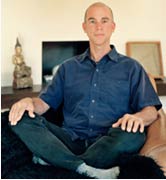 |
||||||||||||||||
|
|
||||||||||||||||
“There is a point where, in the mystery of existence, contradictions meet: where movement is not all movement and stillness is not all stillness; where the idea and the form, the within and the without, are united; where infinite becomes finite, but not.” - Rabindranath Tagore "To meet everything and everyone through stillness instead of mental noise is the greatest gift you can offer to the universe." “Between stimulus and response there is a space. In that space is our power to choose our response. In our response lies our growth and our freedom.” –Viktor Frankl |
Embodied Mindfulness: A Somatic-Expressive Approach to Stillness
|
|||||||||||||||
|
|
|
At the stillpoint of the turning world, there the dance is.
And without the point
that stillpoint
there would be no dance
and there is only the dance. - T.S. Eliot
Embodying mindfulness, and being mindfully embodied, is a huge challenge in modern times. With so much literal (and metaphorical noise) overwhelming our senses, cluttering our psyches, and degrading our attention, it is increasingly difficult to access the spacious place of the still point.
Embodied Mindfulness is my distillation of over four decades of research and practice with meditation, somatic inquiry and movement. This easily repeatable daily somatic sitting practice was designed for the modern body/mind and has been taught for the past 25 years to diverse audiences worldwide and online.
This practice highlights stillness, using focused somatic activities of breath, vocalization, contact, and movement to occupy the mind so the body can settle. Attention to comfort, support and ease of the body in sitting while exploring the movement of breathing creates a sensate respite from the outer world and brings the self back into balance.
Yoga, dance and movement teachers of all types, therapists, educators and life coaches, as well as people seeking more calm and ease in their lives, can benefit from this somatic approach to lively stillness.
- Read this article for a theoretical overview of Embodied Mindfulness and its origins
Attend an Embodied Mindfulness Online weekly class - information here
Pursue Embodied Mindfulness Leadership Certification Online - Training information here
Find Certified Embodied Mindfulness practitioners HERE

Jamie McHugh
"We have a rich cross-cultural legacy of both contemplative and expressive practices at our disposal. How do we draw upon and update them to meet the conditions of the modern mind living in an industrialized body within an urban environment?" -Jamie
About Jamie | What Is Somatic Expression? | Courses | Calendar | Somatic Expression Articles |
Somatic Expression Links | Products | Contact Jamie McHugh | Home